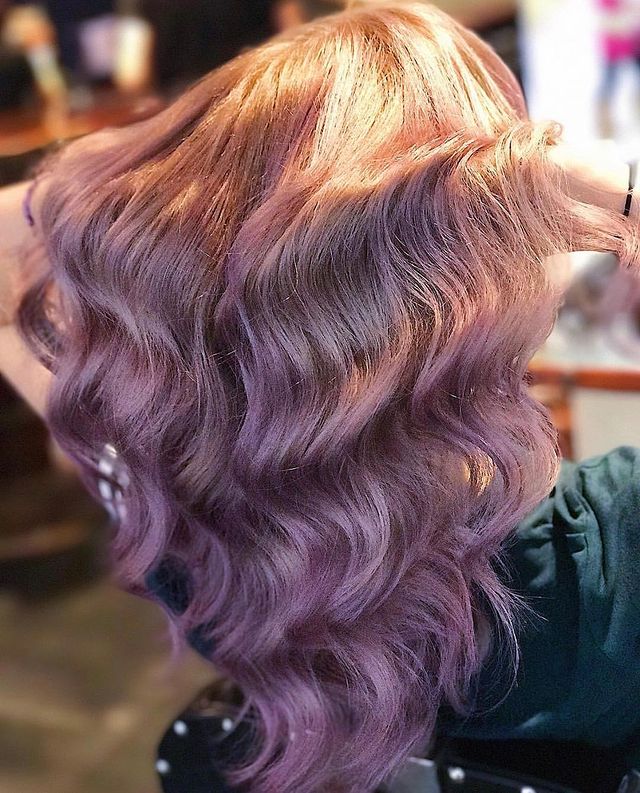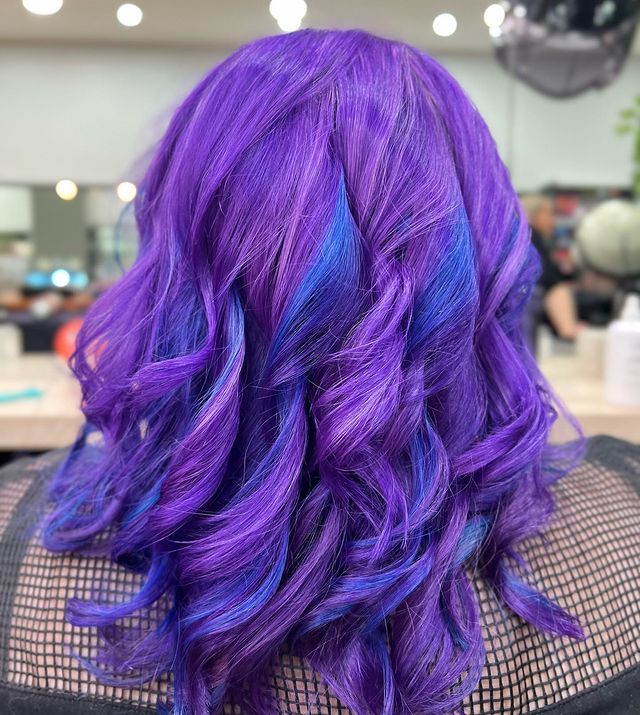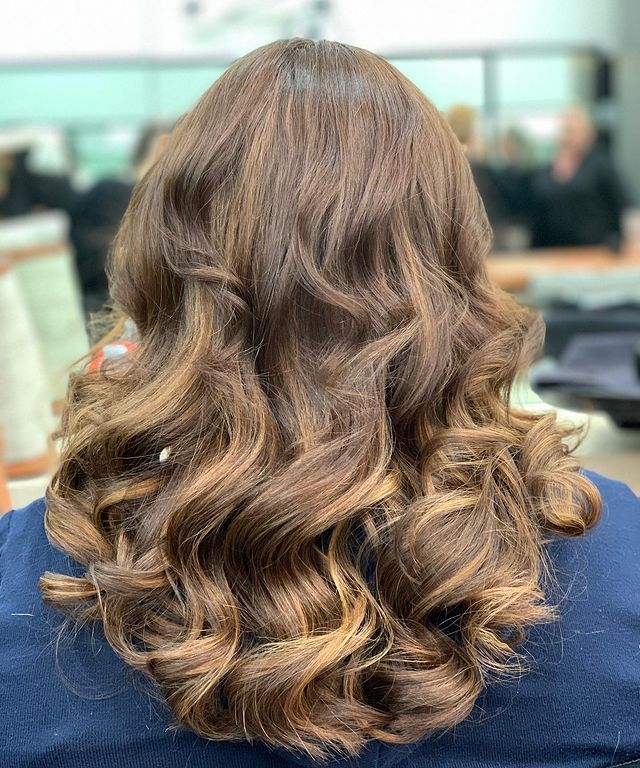Hair Colouring Tips for Thick Hair From Our Hair Stylists

Unlock the secrets to flawless thick hair colouring from the comfort of your home with hair colouring tips from our professional hairstylists. Given the unique needs of thick hair – which often demands more hydration due to its density – and the necessity to preserve the colour’s integrity, individuals with thick, colour-treated hair face unique challenges.
Thick Hair and its Challenges
Thick hair, while often admired for its volume and lusciousness, comes with some challenges when it comes to colour application. Due to the high density of hair strands, the hair colouring application process can be more time-consuming because more product is required to ensure that all hair strands are evenly coated.
Thick hair also absorbs and holds onto colour more, requiring a stronger or more concentrated formula.
-
Hair Porosity
Thick hair’s porosity refers to its ability to absorb and retain moisture and hair color. Porosity is influenced by the hair’s cuticle structure, which can vary among individuals. When the cuticles are tightly packed and resistant to opening, the hair is considered to have low porosity. High porosity hair has more open cuticles, so it absorbs moisture and chemicals quickly.
In thick hair with high porosity, the open cuticles allow the hair to rapidly soak up the hair colour, leading to uneven absorption. Some areas may absorb more colour than others, resulting in a patchy and inconsistent look.
Professional stylists use several techniques and products to address porosity issues and ensure consistent results, such as deep conditioning and protein treatment. These treatments help fill in the gaps in the hair cuticles, reducing their openness and promoting even colour absorption.
-
Hair Density
The density of thick hair affects processing time and product absorption in several ways. Due to the hair volume, it may take longer for the hair colour to penetrate each strand thoroughly. This prolonged processing time needs careful monitoring to avoid overprocessing or underprocessing, ensuring the desired colour outcome.
Experienced stylists understand the importance of correctly sectioning hair to ensure even coverage and consistent colour results. They may also work with smaller subsections to guarantee that each strand is adequately saturated with the hair colour.
The choice of hair colour formulation is critical for thick, dense hair. Opting for a slightly higher viscosity colour can improve product adhesion and colour dispersion.

Hair Colouring Tips: Preparing Your Thick Hair for Colouring
Preparing your thick hair for colouring with pre-colouring treatments and strand testing is a crucial step in ensuring a successful and satisfying outcome. Book a consultation with a professional stylist to discuss your desired colour, assess your hair’s condition, and identify any potential challenges unique to thick hair.
-
Deep Conditioning Treatments
Deep conditioning your hair with natural oils like coconut, argan, and avocado is ideal for intense nourishment and moisture. Shea butter and keratin strengthen and repair, while humectants such as glycerin and honey keep hair hydrated. These ingredients create a perfect canvas for even hair colour absorption, ensuring long-lasting and vibrant results for your thick locks.
-
Protein Treatments
Thick hair is vulnerable to damage due to its density and tendency for tangling. Protein treatments with hydrolysed keratin, soy, or wheat proteins help fortify the strands, making them more resilient to colouring. This reduces the risk of breakage and enhances colour retention.
-
Strand Testing
Strand testing is a crucial step in the preparation process. It involves applying a small amount of the hair colour to a discrete section of hair to determine how it will react. This test ensures the desired colour is achievable and helps predict any potential allergic reactions or hair damage.
Hair Colouring Tips: Choosing the Right Hair Colour for Thick Hair
Choosing the ideal hair colour for your thick hair is key to achieving a flattering look. To ensure an outcome that complements your style and features, consider the following:
-
Skin Tone and Undertones
When considering hair colour, opt for cooler tones like ash or platinum if you have fair skin, while warmer tones like golden browns or caramel complement darker complexions. The right choice enhances your skin’s natural radiance and overall look.
-
Lifestyle and Maintenance Preferences
If you are busy, choose low-maintenance hair colour options like balayage or ombre. These techniques provide a natural, blended look that grows out gracefully, requiring less frequent touch-ups compared to traditional all-over colours. This allows you to enjoy your hair colour without frequent salon visits.
When selecting a hair colour, consider the initial application and the ease of touch-ups to maintain your chosen shade’s vibrancy and freshness over time. Try application techniques such as root smudging or shadow roots which help conceal root regrowth.
-
Highlighting and Lowlighting Options for Dimension
Highlighting and lowlighting are excellent options to add dimension to your thick hair. Highlights create depth and texture, while lowlights enhance richness. These techniques work together to accentuate the natural beauty of your thick locks.
Hair Colouring Tips: Techniques for Coloring Thick Hair
Achieving the perfect hair colour for thick locks requires the right techniques to ensure even colour distribution and vibrant results. Some popular hair dyeing techniques specifically suited for thick hair include:
-
Foil Highlights and Balayage
Foil highlights involve separating sections of hair with foils and applying colour to achieve defined and multidimensional highlights. Balayage entails hand-painting colour onto the hair for a natural, sun-kissed effect, making it an excellent option for a low-maintenance look.
-
Ombre and Sombre Techniques
Ombre creates a gradual transition from dark roots to lighter ends, while sombre offers a softer and more subtle version of this look. Both techniques provide a stylish and contemporary approach to colouring thick hair.
-
Colour Melting and Shadow Roots
Colour melting blends multiple colours seamlessly, creating a smooth transition between hues. Shadow roots involve intentionally leaving the roots slightly darker than the rest of the hair, softening the contrast between regrowth and coloured hair.

Hair Colouring Tips: Application and Processing Tips for Thick Hair
Applying and processing hair colour on thick hair requires careful attention to detail and specific techniques to ensure consistent and optimal results. Some essential tips for effectively coloring thick hair include:
-
Sectioning and Parting Techniques
Sectioning and parting the hair is critical in ensuring precise and consistent colour application. To achieve even results, divide the hair into approximately 2-5 cm wide sections. Use clips or hair ties to secure each section, ensuring they are well-separated and easily accessible for colouring. This methodical approach guarantees thorough coverage and minimises the risk of missing any areas during the application process.
-
Proper Product Application
Proper product application is essential for achieving beautiful and even colour results while avoiding hot roots. To start, use a brush or applicator to apply the hair colour product about 2-3 cm away from the roots. Then, work the product into the hair, ensuring full coverage and saturation from mid-length to end.
This technique prevents the roots from appearing overly processed compared to the rest of the hair. Avoid overlapping sections to maintain uniform colour distribution.
-
Managing Processing Time for Optimal Results
Different hair colouring products require varying processing times; however, thick hair may require extended processing time due to its density. Follow the instructions provided by the hair colouring product and consider adding extra processing time if necessary. Regularly check the hair during processing to monitor colour development.
Discover the True Beauty of Your Thick Hair With Intaglio
Colouring your thick hair can transform your overall style. Although you can colour your hair at home, it is highly recommended to visit a professional hairstylist for the best and most personalised results. Their expertise and knowledge of thick hair ensure perfect colour application, vibrant results, and optimal hair health.
If you are ready to update your hair colour, contact Intaglio for a colour consultation with one of our experienced stylists. Whether you need your root touched up or a head of foil highlights, our team can help you achieve your dream hair colour.






